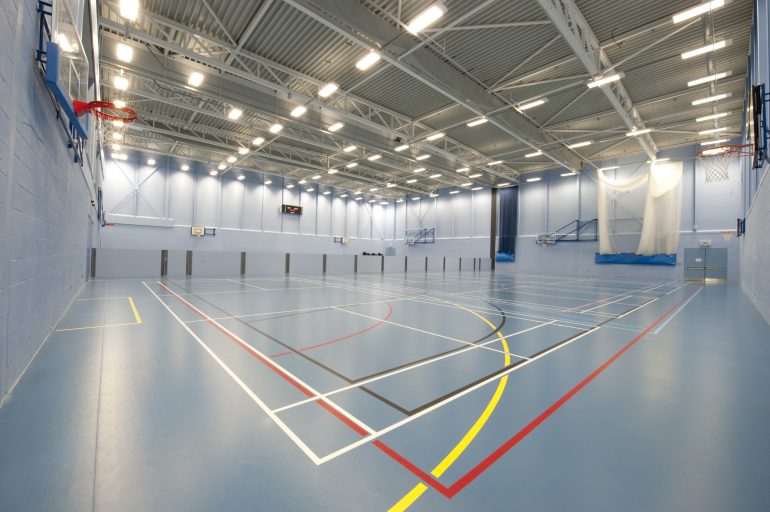Q. I’ve applied Stopgap F77 waterproof surface membrane over a concrete screed, and it’s not curing in places. Why is this?
A. Stopgap F77 is a two-part waterproof surface membrane. The product hardens, or ‘cures’, as a result of a chemical reaction between the two components – the resin and the hardener. If the applied waterproof surface membrane isn’t curing properly, it’s likely because the two components haven’t been mixed properly and this will show itself as being inconsistent in curing. In this case, you’ll need to scrape away the uncured sections of the waterproof surface membrane and make sure the surface is clean and dust-free before applying another coat of Stopgap F77 that has been properly mixed. The components are supplied in the correct quantities for mixing, so empty the hardener into the resin and mix using a power whisk fitted to a low speed electric drill. Mix for 2 minutes, then scrape the sides of the container before mixing for a further 2-3 minutes. It should then be poured immediately over the subfloor.
Q. What adhesive does F. Ball recommend for installing artificial grass over concrete outdoors?
A. F. Ball’s Styccobond F74 polyurethane flooring adhesive is ideal for securing a wide range of synthetic grass carpets and is suitable for outdoor use; it is resistant to water, oil and grease when cured. Styccobond F81 and F84 are two-part epoxy adhesives that are also suitable for outdoor use and can also be used for installing PVC-backed synthetic grass carpet.
Q. I am preparing an uneven concrete screed, and a waterproof surface membrane is required. What product should I use?
A. Waterproof surface membranes applied to an uneven subfloor can pool in undulations, compromising the effectiveness of the waterproof surface membrane and meaning a greater quantity of product may be required to achieve full coverage. Therefore, you may consider applying a levelling compound before a waterproof surface membrane. In this case, be sure to select a levelling compound with a high degree of moisture tolerance, such as Stopgap Green Bag, Stopgap 850 or Stopgap 1200 Pro. After waiting 24 hours following the application of the levelling compound, you can proceed to apply F. Ball’s Stopgap F77 waterproof surface membrane to create a barrier against subfloor moisture where relative humidity RH levels are less than 98%. Once cured, a further application of an appropriate primer and floor levelling compound can be applied to provide a smooth base ready for the installation of new floorcoverings.
Q. What adhesive should I use to install cork tiles?
Styccobond F3 is suitable for up to 3.2mm thick cork tiles. Styccobond B95 is also ideal. It’s is a solvent-free, flexible, one-part polyurethane adhesive for for installing a wide range of wood floorcoverings that develops a high final bond strength. It’s non-flammable, quick-drying and designed to accommodate natural movement in wood flooring over its lifetime. Alternatively, you may choose a contact adhesive, such as F. Ball’s Styccobond F60 or Styccobond F66. Check F. Ball’s recommended adhesives guide
Q. What adhesive is best to use to install LVTs in an ensuite?
A. You could use an epoxy or polyurethane-based adhesive, such as Styccobond F81, Styccobond F84 or Styccobond F74 because these types of adhesive are resistant to water and can be used to install a wide range of vinyl adhesives. However, our new Styccobond F49 Hybrid PS vinyl adhesive is ideal for this type of installation. It’s a temperature tolerant, water-based adhesive for vinyl floorcoverings, which develops the ultra-high bond strength required to hold floorcoverings firmly in place where they are exposed to extreme temperatures and temperature fluctuations (between -20C and +60C). This prevents tenting and gapping that can occur over time in these conditions and creates a water resistant bond that makes it suitable for installing floorcoverings in damp and humid environments. The strong initial tack offered by the adhesive makes it ideal for ensuring LVTs are properly aligned, particularly where installing complex designs and patterns, while allowing for readjustment if necessary.
Q. I’m installing vinyl sheet floorcoverings in a sports hall over a concrete subfloor containing underfloor heating. The subfloor relative humidity level is about 95%. What’s the best moisture management solution?
Most waterproof surface membranes won’t be effective where underfloor heating systems are in place. F. Ball’s Stopgap F77 is an exception – it can be used to create a barrier against excess subfloor moisture where relative humidity levels in screeds containing underfloor heating systems are up to 90%. So, presuming the moisture reading is caused by residual construction moisture, you will need to allow the screed time to dry further before applying Stopgap F77, priming using Stopgap P141 primer and applying a levelling compound prior to the installation of the vinyl floorcoverings.
Our technical team are on standby to answer questions about your projects and F. Ball products from 7.30am – 5.00pm, Monday to Friday.
Please note: site conditions vary. Don’t rely on these specific responses for your own project. If you are unsure about any technical issue relating to specific flooring installations, contact the F. Ball Technical Service team on 01538 361633 or consult the product data sheets available from F. Ball’s website.


